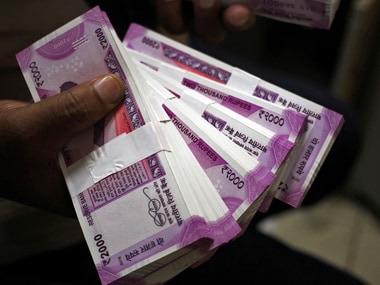The transfer of reserves of the Reserve Bank of India (RBI) to the government was a known transaction. The conjectures were the quantum of transfer and the time period over which this would take place. The announcement of the transfer of Rs 1.76 lakh crore should be interpreted against this background. The RBI has stated that Rs 1.23 lakh crore would be in the form of surplus and the balance from the reserves. It also seems that this transfer would be done at one shot this year. This means that the government will get a bonanza of around Rs 86,000 crore over and above the budgetary provision of Rs 90,000 crore. There is nothing to preclude further such transfers in the future based on adjustments of various kinds of reserves.
This is perfectly within the RBI Act and hence there can be no quarrel about it. In fact, it is a way of extracting value from the act of central banking where these reserves are constructed as the RBI works on managing the currency which helps to build one reserve from forex management and another from monetary operations which creates another reserve.
[caption id=“attachment_4495585” align=“alignleft” width=“380”]  Representational image. Reuters.[/caption] How can one look at this incremental tax Rs 80,000 crore? The Budget for 2019-20 was drawn on assumptions which could be called heroic as the overall size of the Budget at around Rs 27.86 lakh crore was to be achieved over Rs 23.11 lakh crore of actual expenditure in FY19 against an outlay of Rs 24.57 lakh crore in the revised estimate. The finance minister has used a higher base which was an overstatement of around Rs 1.46 lakh crore. It may have been implicitly assumed that the RBI reserves would come in the course of time during the year. Hence, this additional income from the RBI could help to shore resources to meet the Budget target. Interestingly, the Budget target for FY19 was achieved by some aggressive cut in the expenditure of Rs 0.13 lakh crore in CapEx and Rs 1.3 lakh crore of revenue expenditure cuts including some serious rollover of subsidies. This can be eschewed to an extent this time. Therefore, the extra revenue from the RBI is unlikely to provide a cushion for any kind of stimulus that is being spoken of in the present context after the FM made some positive announcements. It is more likely to be a useful sum to shore up the Budget instead. However, there is still the possibility that the government may use this Rs 80,000 crore as additional revenue which can be spent on fresh projects. This is also likely as it will boost sentiment. This will be based on the assumption that revenue does increase by Rs 4.75 lakh crore as per the July Budget. And even if does not, there can be rollovers and CapEx cuts resorted to by the end of the year. In that case, round 2 of policy announcements of the FM could involve some stimulus by invoking new projects. This can mean a delta for the economy and can help growth depending on how it is spent. Presently, the fear of inflation is low as the Wholesale Price Index (WPI) for manufactured goods is in the range of less than 1 percent and would not really trigger excess demand pressures that can push up prices. In a way, such expenditure will be inflation neutral and to the extent, the price will move up and will improve the pricing power of some sectors.
It has also been stated that the RBI balance sheet has to be recast and it would be interesting to see how the numbers look. Transferring the reserves will mean reducing the size of the balance sheet and hence some components have to be deflated. Also, it would mean downsizing some assets to match the liabilities. Therefore, in an accounting sense, this will be of interest.
The timing of this transfer has been quite clinical as it coincides with the series of policy changes and reforms that the finance minister has spoken of last week. While a conservative view is that this amount will only support the existing budgetary numbers, the more optimistic scenario is that this can be interpreted as funding of some new expenditure to be announced. Either which way, this will be helpful for the government as it supports the deficit and like disinvestment can offer an avenue for raising resources on a more permanent basis in future. (The writer is Chief Economist, CARE Ratings)


)

)
)
)
)
)
)
)
)



